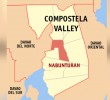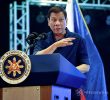*Paper read by Prof. Bobby Tuazon, Director for Policy Studies, Center for People Empowerment in Governance / CenPEG, pre-SONA 9th State of the Presidency, held July 20, 2017, UP Diliman, Quezon City
The peace negotiations between the government (GPH) and National Democratic Front of the Philippines (NDFP) resumed last year in an upbeat mood with both sides agreeing to fast track the process. A year later, the talks has lost its steam and is proving to be a difficult and protracted one with a probability of meeting the same fate as in previous negotiations. Even as both the GPH panel led by Silvestre Bello and the NDFP panel led by Fidel V. Agcaoili try to save the process through continuing back-channel talks the realities on the ground – such as military intransigence and President Duterte’s poor grasp of the peace process, on one hand, and the NPA holding its ground to resist AFP operations, on the other – far outweigh efforts to keep the talks going.
After fighting Marcos rule that eventually weakened the dictatorship’s repressive apparatus, the Marxist armed Left won tacit recognition as a belligerent force compelling the post-Marcos regimes starting with Corazon C. Aquino to negotiate for peace in 1986 with the NDFP which represents the CPP and its armed component, New People’s Army (NPA). The main thread that binds government negotiations over the past 30 years – with The Netherlands and Norway governments hosting the talks – has been to pressure the armed Left to capitulate while launching total wars resulting in human rights abuses and, of late, refusing to honor previous agreements and tagging the armed Left as “terrorist.” With its doctrinaire anti-communist and pro-US stance, the security establishment – politicized by Marcos military rule in the 70s-80s – held the leverage to eventually scuttle peace talks at every opportunity when these are held. Today, both government forces and the leftist guerrillas are technically in a deadlock as the NPA expands its zones of operation. US officials, a wikileaks expose reveals, admit that the Philippine government cannot defeat the NPA.
In the 30-year timeline of protracted peace talks, the social and economic conditions in the country worsened through widening income disparities, unemployment, and economic hemorrhage while patronage politics and corruption made elite rule even more entrenched. It was clear from the start of the peace talks that more than being a converging point the negotiating table served as a wall separating two opposing perspectives and interests. On one side was the GPH panel representing the state whose role is to preserve the status quo of the dominant class of oligarchs, an unequal alliance with the US, and a political system legitimized in principle by a constitution which is otherwise mocked by the ruling oligarchs themselves. On the other side, was a revolutionary organization that envisions, so its program claims, to overhaul the class system, implement a genuine agrarian reform and national industrialization en route to establishing a socialist state. Even as it wages armed struggle, the NDFP has stated, a negotiated political settlement that comprehensively addresses the roots of war remains an option.
For this option, a window was opened under Duterte. The new president appointed a few progressives to the cabinet and had some key political prisoners on temporary release to allow them to participate in a restored peace negotiations. Likewise, the president’s panel agreed with the NDFP to reaffirm previous agreements including the Comprehensive Agreement on the Respect of Human Rights and International Humanitarian Law (CARHRIHL) and the Joint Agreement on Security and Immunity Guarantees (JASIG). Their joint communique paved the way for a round of formal talks that, both panels agreed, would tackle within two years a Comprehensive Agreement on Social and Economic Reforms (CASER) – considered as the key that will unlock other agreements like a Comprehensive Agreement on Political and Constitutional Reforms (CAPCR), end of hostilities, and disposition of forces.
Thus far, both sides have reached an agreement in principle on free land distribution as they also began to hammer out mechanisms for monitoring the enforcement of CARHRIHL as well as ceasefire agreement. The NDFP’s chief political consultant, Prof. Jose Maria Sison, also proposed that the NDFP can co-found the Federal system of government, a priority agenda of Duterte to replace the current unitary and presidential system.
The May 2017 fifth round of talks in The Netherlands was, however, unilaterally put “on hold” by the GPH panel as the cabinet-level peace and security cluster led by Defense Secretary Delfin Lorenzana prevailed upon the GPH principal – Duterte – to demand a stop of offensives by the CPP-NPA and that an early joint bilateral ceasefire agreement be signed first before talks can proceed. In response, the NDFP said that the NPA was acting in response to Lorenzana’s warning that the martial law declared in Mindanao against terrorist groups covered the NPA as a target. The NDFP negotiators added that a bilateral ceasefire agreement should be preconditioned first on agreements on social and economic reforms as well as political and constitutional reforms. As both panels gear for the calendared resumption of talks in August in Oslo, the countryside remains disquiet with internecine armed hostilities between government and NPA forces.
While both panels particularly the GPH are looking for an “enabling environment” for continuing the talks, core internal factors actually dictate the pace and prospects of the process. On the government side, is Duterte’s tendency to heed the preponderant voice of his peace and security cluster such as on an early bilateral ceasefire often overshadowing the conciliatory position of his own peace negotiators. There are factions and hawkish minds within the security force that are by heart opposed to the peace talks just as there are powerful elements who find fundamental social and economic reforms sought by the Left unsettling. By all indications the president is torn between ensuring that the security institution is loyal to him and pursuing talks with the Left to end what he calls “fighting among fellow compatriots.”
Despite the short-term goal of winning the loyalty of the AFP and promoting neo-liberal policies to boost economic growth, the president is oblivious of the long-term gain of forging a final peace agreement that will put in place comprehensive institutional reforms that he can perhaps leave as a legacy. It could be an arduous process but in the final analysis, how far the GPH panel can pursue the peace talks with the Left lies on the president’s hands. The GPH panel, however, is well-advised to take note that a just and lasting peace pact is a meeting of minds between two forces who face each other on equal footing and use a peace agreement as an instrument for instituting reforms with the effective participation of erstwhile belligerent forces and the people.
On the part of the NDFP, the government side has raised questions whether their negotiating panel truly represents the CPP and NPA given what AFP generals say are continuing offensives by the red guerrillas. The NDFP panel clarified that in the same way that the GPH party’s principal is the president their own principal remains to be the CPP, now led by a younger corps of cadres. As Sison, the NDFP’s chief political consultant, said in a Telsur analysis last June 26, the CPP, NPA, and NDFP “have publicly expressed their readiness to fight and defeat the all-out war policy of the Duterte regime. At the same time, they are still willing to pursue the peace negotiations with the GRP even under conditions of the severest fighting in the civil war in order to…forge the comprehensive agreements for a just and lasting peace against the oppressive and exploitative forces of foreign monopoly capitalism, domestic feudalism and bureaucrat capitalism.”










